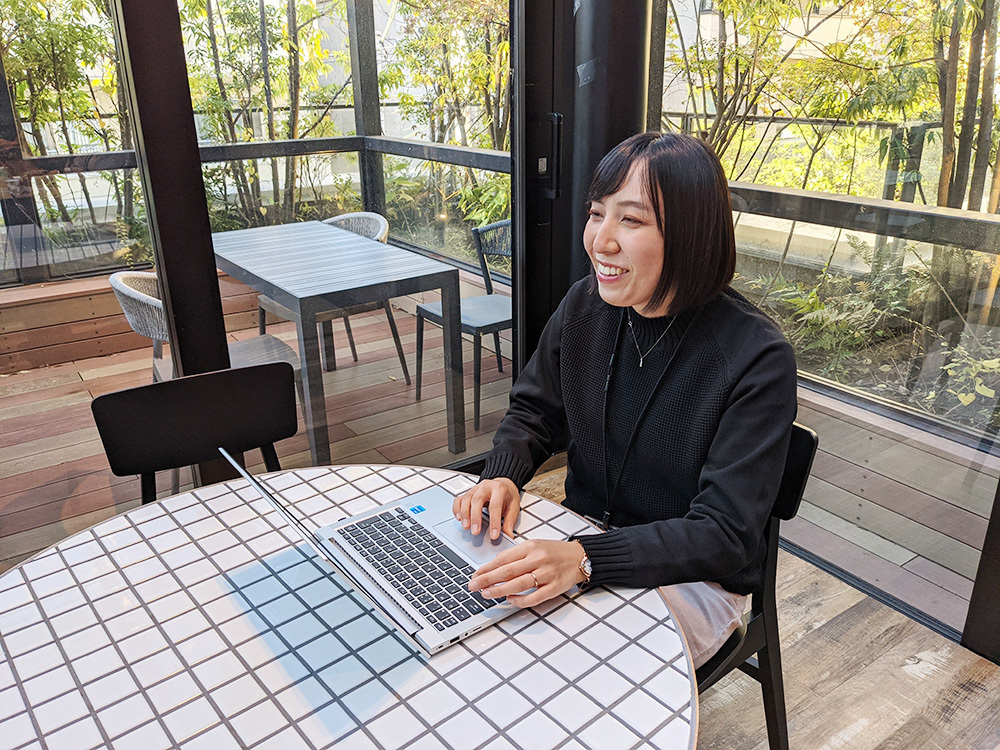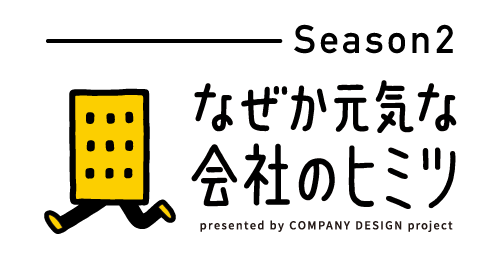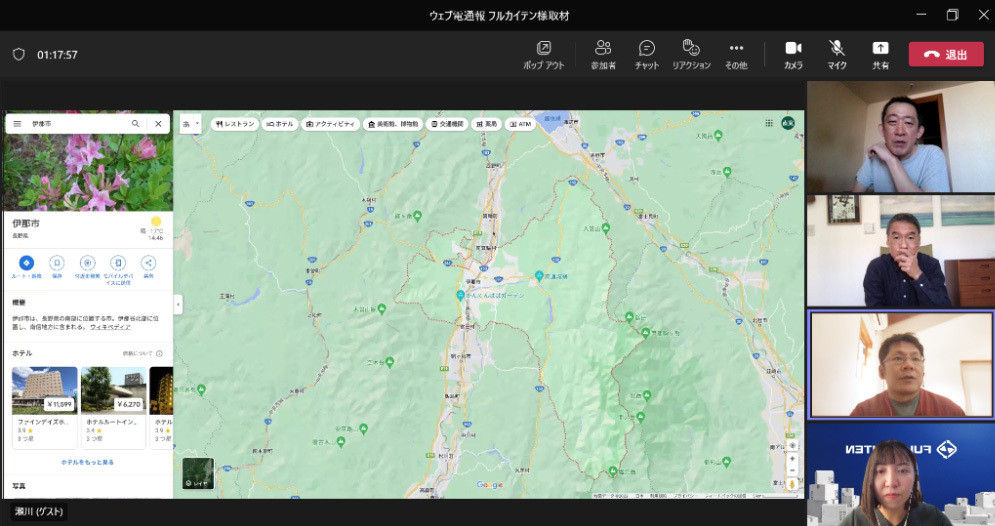This series, led by Dentsu Inc.'s 'Company Design' team, explores the secrets behind vibrant companies with 'originality.' In the 26th installment, we introduce Fullkiten, a company sustaining the momentum of startups challenging conventional wisdom by creating business models that overturn established norms, particularly in the apparel industry. Their creativity and drive are truly 'full throttle,' both in business and personal life. We delve into the appeal of such a company.
Full Kaiten is a company that maintains the momentum of a startup by proposing solutions to the "inventory problem" – a major pain point for many retailers, especially in the apparel industry – through the use of cutting-edge technologies like AI and SaaS(※).
Trading often carries a very down-to-earth, human image. In a positive light, it's "work done with heart," akin to the Omi merchants' principle of "benefit for all three parties." Conversely, business can evoke impressions like "coolly facing numbers to boost performance" or even "achieving results by stepping on colleagues or rivals."
While respecting customers, partners, and colleagues is vital in work, the ability to read numbers with a cool head is equally indispensable. We asked Full Kaiten's President, Naohiro Segawa, about this "desirable form of commerce and business" from various angles.
※SaaS (Software as a Service): A service where users access software hosted on a vendor's cloud server via the internet.
Written by: Shinji Muto (Dentsu Inc. SCC)

Naohiro Segawa: Representative Director and CEO of Full Kaiten. Born in 1976 in Nara Prefecture. At Keio University's Faculty of Science and Technology, Department of Mechanical Engineering, he immersed himself in research such as predicting natural gas state changes using machine learning and statistics. After graduation, he joined a foreign IT company as a sales representative. He soon achieved sales of 640 million yen, becoming the top salesperson. After working at several IT companies, he founded Hamons, the predecessor to FULL KAITEN, in 2012. The company changed its name in 2018 and continues to this day.
So, what exactly is the "pitfall" of numbers?
We asked President Segawa, a hardcore science major who studied statistics in university, about the "traps of numbers." "I believe the trap lies in the overconfidence that predictions based on numbers are absolutely correct, and that as long as we maximize their accuracy, things will definitely go well. Take AI, for example. It certainly has amazing capabilities. However, the apparel business follows a process starting with 'product planning,' then production, delivery, and sales. It's impossible for the numbers AI generates at the product planning stage to be absolutely correct forever. Even if AI gives its stamp of approval, natural disasters could strike. That's something no one can predict."
President Segawa states that FULL KAITEN pours its heart and soul into how to set the "lifetime cycle" of inventory within its SaaS platform 'FULL KAITEN'. Within the flow described above, the focus is on how to define the journey from product planning to sell-out and how to shorten that cycle. "Of course, we utilize AI and statistics throughout this process. But they are by no means a magic wand. Misusing them can lead to painful consequences."
Strategy emerges from the "combination" of multiple metrics
President Segawa states that a company's mission should be singular. "For our company, solving the global problem of mass waste is the top priority. Naturally, there are countless things we need to do to achieve that. But what often happens is they just list 'seven actions for that purpose'. That's not strategy. For example, with inventory issues, what we do is create a graph with the predicted sell-out date on the X-axis and the contribution to client sales on the Y-axis. This creates four distinct zones. This makes things visible that weren't apparent before."

To break down President Segawa's point: typically, strategy is judged based on a single metric – whether a product is a "top seller" or a "slow seller." Then, if it doesn't sell well, the reaction is often, "Oh well, just put it on sale!" "The goldmine lies in combining two metrics. For example, 'products that take forever to sell out but have incredibly high profit margins' are golden eggs for companies. That's where AI and statistics come into play."
When evaluating employee growth, perspective is paramount
I asked what he focuses on as a manager to foster this "full rotation" at Full Kaiten. "The keyword is a spiral staircase. People involved in management inevitably expect and demand rapid growth from their members, right? That's like looking down at a spiral staircase. From above, it just looks like members are circling around the same spot, so you think, 'Hurry up and get up here!' That's the image of demanding rapid growth."
President Segawa continued, "But in most cases, the growth of people and businesses happens gradually. At least, I've rarely seen rapid growth. That's why I believe it's better to view the spiral staircase from the side. Looking at the spiral from the side, you can see they're steadily climbing upward, one turn at a time. I think this is what growth truly means. I describe steadily climbing a spiral staircase as someone's small changes and evolution. When individuals notice these small changes and evolutions happening, and when a culture develops where others notice them too and give positive feedback, it fosters a sense of self-worth and trust in colleagues for each person. This brings out each person's strengths and good qualities, allowing the organization to grow strong—where someone's strengths cover another's weaknesses. That's the perspective I use when observing employee growth."
Public Relations Manager Atsuko Saito shared this insight with us. "Our company culture includes something called Value Cards. It's a system where we write down and give cards to employees we believe embody our values: Value Antenna, Full Effort, and Scrum Mindset. Receiving one encourages the person, making them feel, 'Someone really noticed my hard work.' For the giver, observing other members also means seeking out their good points. The aim of Value Cards is to keep this chain of values going."

Atsuko Saito: After graduating, she joined a kitchenware manufacturer and established its PR team. She later moved to a major household goods manufacturer, serving as both PR manager and SNS team leader. Growing increasingly interested in consumer engagement, she transitioned to a major general merchandise retailer, gaining sales experience. During her sales career, she recognized the deep-rooted challenges of inventory issues and joined Full Kaiten. She currently belongs to the Strategic PR Team, working to enhance Full Kaiten's corporate recognition as a corporate PR specialist.
We actively seek out and praise each other for contributions to maximizing customer satisfaction and value, no matter how small. Saito notes this applies even to 1-on-1s with the president. The perspective is entirely different from the typical 1-on-1 image of "Please evaluate my results for this half-year!"
The Source of Excitement and Anticipation in Work
In October 2022, Full Kaiten established a new Ina Office in Ina City, Nagano Prefecture, alongside its Osaka (headquarters) and Tokyo offices. "My wife, who is an employee, our two young children, and I moved here from Osaka. It's a satellite office nestled in a beautiful valley. The environment is simply wonderful. Everything is perfect—the natural setting with a forest just a 10-minute walk away, and the educational environment that values children's autonomy."

The Mibugawa River flows right near the office. Beyond it, the mountains of the Japanese Alps stretch out.

The panoramic view of nature from the office. (Photo: President Segawa's wife, who is also a Full Kaiten employee)
President Segawa continued happily, "My own child wakes up early every morning to play in the garden before school. The classroom scene itself was also shocking. There's no teacher's desk. The teacher stands in the middle of the classroom while the students, beaming with smiles, each work on whatever they like. It was love at first sight, and I decided to relocate for the education."

The Segawa family heading from the park to the forest. In the forest, they can enjoy various events like handmade play equipment and bonfires.

The president's daughter, munching on homemade bread baked over the campfire. Well, it's bread she baked herself. Of course it's delicious.
At the same time, President Segawa continues, "I realized this is probably what a company should be. The creativity and drive for exciting, thrilling work—that's something nurtured by environments like Ina." Lifestyle and work-life balance have become established concepts in society. Yet, the definitive answer remains elusive. With values in the world diversifying this much, it's only natural.
A Shift in Perspective: "From Making Things to Making People"
After discussing analytical methods and efficiency, I posed a slightly provocative question: "If you pursue such efficiency, won't the apparel industry lose its creativity?" President Segawa answered without hesitation: "If we build the ability to profit, the apparel industry still has plenty of hope. We can invest in small-batch production tailored to customer needs and product development that unleashes designers' talents, expanding possibilities further and further. Our company wants to support that."
He concluded with this final thought: "I believe the time has come to rethink the old mindset where cost equals expense. As long as we see it as cost, we inevitably drift toward harsh measures: lowering quality, increasing lot sizes, expanding stores to sell everything, and dumping leftover inventory through sales! I believe we've reached a turning point where we need to shift our thinking: cost = investment in customer loyalty. It's about moving 'from manufacturing to people-making'. Not mass-producing goods and selling them off with excessive discounts, but cultivating genuine fans of the company and its products, one person at a time."
The "just right relationship" mentioned in this article's title, I realized, emerges from an attitude of cherishing one's own life, connections with others, and the environment.
Corporate website: [ Link ]
Official note is here.
 This series explores the secrets behind "vibrant companies" possessing "originality," investigated by Dentsu Inc.'s "Company Design" team. In the 26th installment, we introduced Full Kaiten, a company sustaining the momentum of a startup challenging conventional wisdom by building business models, primarily in the apparel industry.
This series explores the secrets behind "vibrant companies" possessing "originality," investigated by Dentsu Inc.'s "Company Design" team. In the 26th installment, we introduced Full Kaiten, a company sustaining the momentum of a startup challenging conventional wisdom by building business models, primarily in the apparel industry.
Season 1 of the series is here.
The "Company Design" project site is here.
[Editor's Note]
At the end of the interview, I asked this question: "Ina is a valley, right? President Segawa, could you tell me why you fell in love with Ina specifically—a valley—rather than a basin or alluvial fan?" He promptly explained, using a map displayed on the remote screen.

Production staff for this series (from top: Editor Nakazawa, interviewer Mutō) and Full Kaiten President Segawa and Saito studying the map.
Both mountains and valleys stretch sharply and elongatedly north to south. Just looking at the map, you can feel it's a place embraced by forests and mountains. After that, the beautiful views of the Southern Alps and Central Alps displayed on the PC screen drew an involuntary sigh. President Segawa's outlook on life is consistently framed in "multi-axial" terms. In business, personal relationships, and child-rearing, he avoids rigid "must-do" rules. One might even say he applies this "multi-axis" philosophy to nature itself. It means approaching everything with tolerance and multifaceted analysis.
President Segawa's dream is to eventually make Ina a place where entrepreneurs from the child-rearing generation gather. New ideas and new things emerge from everyday casual conversations. It's not a Silicon Valley concept, but rather an Ina Valley (Ina Valley) concept.










 This series explores the secrets behind "vibrant companies" possessing "originality," investigated by Dentsu Inc.'s "Company Design" team. In the 26th installment, we introduced Full Kaiten, a company sustaining the momentum of a startup challenging conventional wisdom by building business models, primarily in the apparel industry.
This series explores the secrets behind "vibrant companies" possessing "originality," investigated by Dentsu Inc.'s "Company Design" team. In the 26th installment, we introduced Full Kaiten, a company sustaining the momentum of a startup challenging conventional wisdom by building business models, primarily in the apparel industry.




